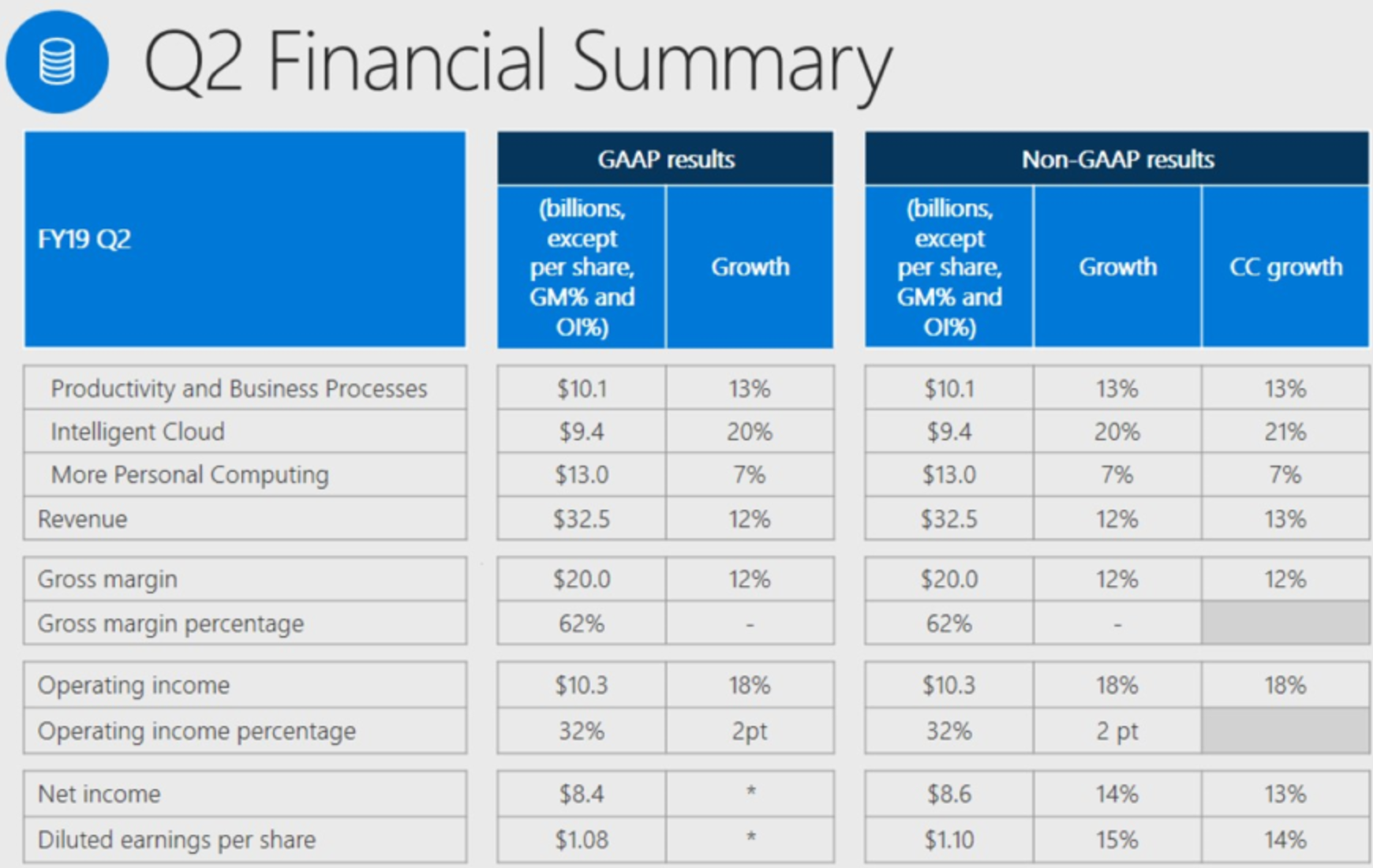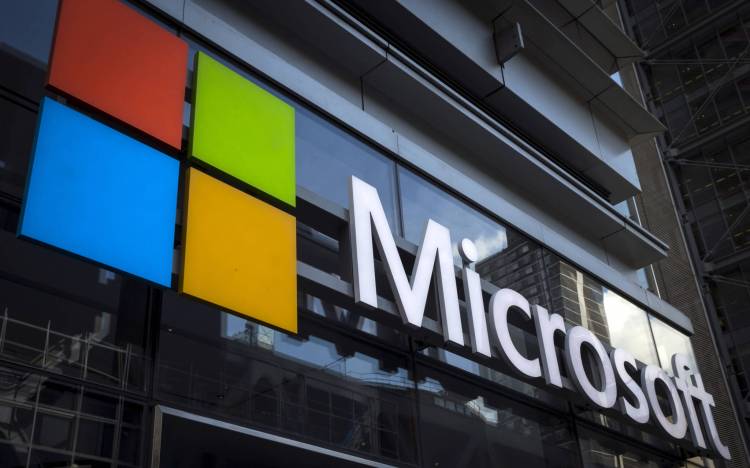Microsoft today reported earnings for its second fiscal quarter of 2019, including revenue of $32.5 billion, net income of $8.4 billion, and earnings per share of $1.08 (compared to revenue of $28.9 billion, net income of $7.5 billion, and earnings per share of $0.96 in Q2 2018). All three of the company’s operating groups saw year-over-year growth.
Analysts had expected Microsoft to earn $32.5 billion in revenue and report earnings per share of $1.09. The company thus barely met, but did not beat, expectations. The company’s stock was up 3 percent in regular trading, but down 3 percent in after-hours trading. Microsoft said it returned $9.6 billion to shareholders in the form of share repurchases and dividends during the quarter.
“Our strong commercial cloud results reflect our deep and growing partnerships with leading companies in every industry including retail, financial services, and healthcare,” Microsoft CEO Satya Nadella said in a statement. “We are delivering differentiated value across the cloud and edge as we work to earn customer trust every day.”
The consistent quarterly success can be attributed to Nadella’s plan to turn Microsoft into a cloud company. In 2017, Microsoft’s cloud annualized run rate passed $20 billion, ahead of schedule.
June 5th: The AI Audit in NYC
Join us next week in NYC to engage with top executive leaders, delving into strategies for auditing AI models to ensure fairness, optimal performance, and ethical compliance across diverse organizations. Secure your attendance for this exclusive invite-only event.

Here are the highlights across Microsoft’s three operating groups:
- Productivity and Business Processes: Up 13 percent to $10.1 billion. Office commercial revenue grew 11 percent, Office consumer and cloud revenue was up only 1 percent, and Dynamics revenue increased 17 percent. LinkedIn revenue jumped a solid 29 percent. Office 365 consumer subscribers hit 33.3 million.
- Intelligent Cloud: Up 20 percent to $9.4 billion. Server products and cloud services revenue grew 24 percent, while Enterprise Services revenue increased 6 percent. The big number as always was Azure revenue, which took off by 76 percent.
- More Personal Computing: Up 7 percent to $13.0 billion. Windows OEM revenue was down 5 percent, while Windows commercial revenue increased 13 percent. Search advertising revenue minus traffic acquisition costs jumped 14 percent. Surface revenue increased by 39 percent, and gaming revenue was up 8 percent (driven largely by Xbox software and service growth).
Microsoft has successfully monetized its LinkedIn acquisition. It has been more than two years since the acquisition closed in December 2016. But there is still plenty of run rate — various divisions at the company are only getting started with figuring out how they can integrate with the platform.
THREAD: $MSFT Q2 EARNINGS
Revenue: $32.5 billion ⬆️ 12%
Operating income $10.3 billion ⬆️18 %
Net Income: $8.4 billion
EPS: $1.08 pic.twitter.com/6HqptySb9S— Microsoft (@Microsoft) January 30, 2019
The question is whether Microsoft can do the same with its $7.5 billion acquisition of GitHub, which only closed in October. The above tweet shows Microsoft is including GitHub numbers under its Intelligent Cloud division (specifically under server products), but the company didn’t break GitHub out in its earnings release. That will likely come next quarter.
The steady growth of Surface continues — $1 billion quarters are the norm, and at $1.86 billion this quarter, the $2 billion mark is suddenly in reach. In September, Microsoft held a Surface hardware event in New York City, where it announced three refreshed devices: Surface Laptop 2, Surface Pro 6, and Surface Studio 2. In time for the holiday quarter, those likely contributed to the results. Microsoft doesn’t break out Surface sales, however, so we still don’t know how, for example, the Surface Go sells compared to the Surface Book 2.
In Q3, Microsoft became a top 5 PC vendor in the U.S. Earlier this month we learned that the company held its position in Q4, showing that it wasn’t just a one-time blip.

